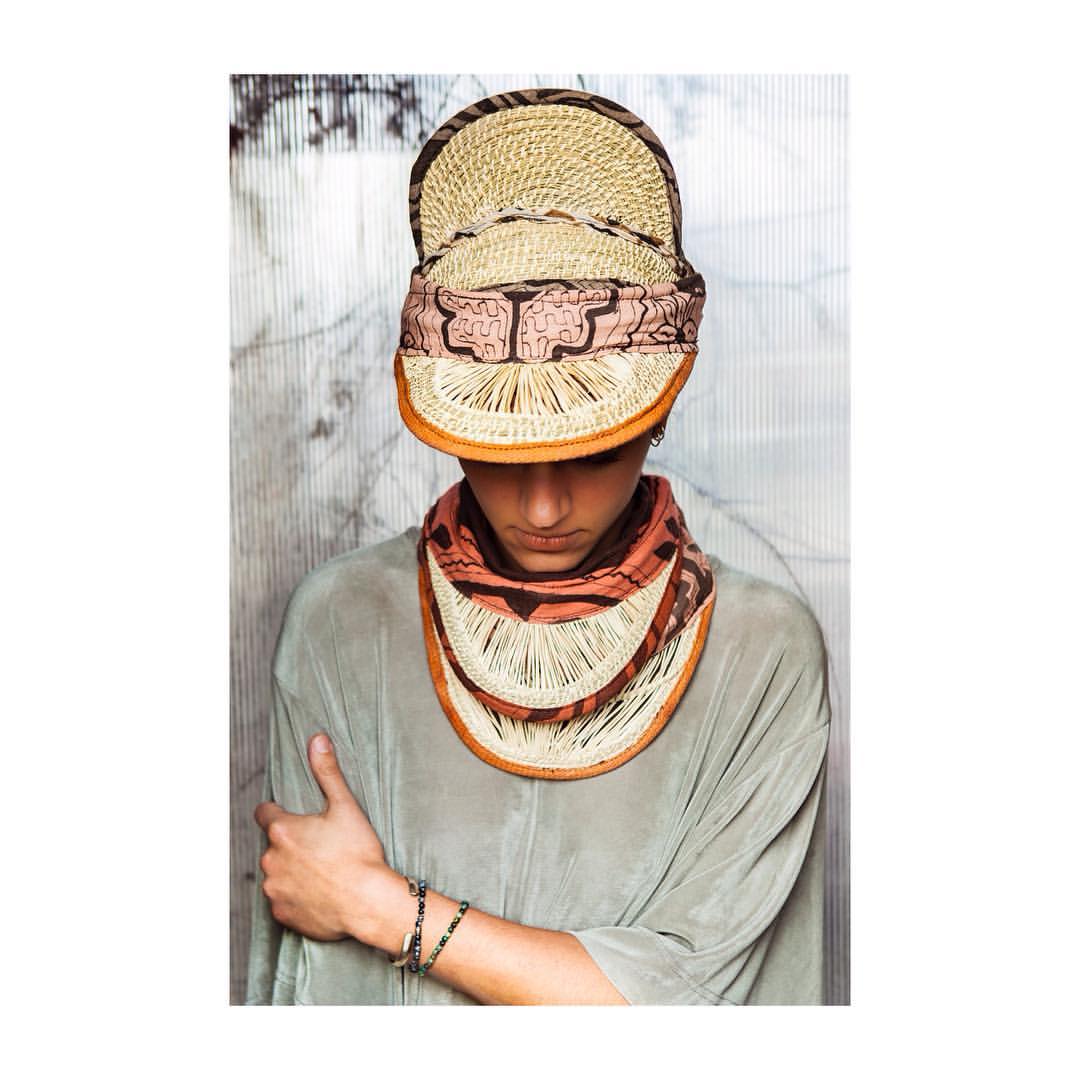SITTAKA
In Conversation with Paulina: SITTAKA and the Sacred Art of Crowning
I recently returned from an incredibly beautiful and adventurous journey to Ani Nii Shobo, a sacred place nestled deep in the Peruvian jungle. There, I met extraordinary souls—including Paulina, founder and designer of the stunning headwear brand SITTAKA.
SITTAKA is a collection designed to reconnect us with our roots and Mother Earth while crowning our heads in deep devotion to the beauty of life and the divine. Each piece rests on the crown chakra—the highest point of the head—guarding what many traditions consider our spiritual center. Born from a profound love for nature, SITTAKA works hand-in-hand with local Shipibo craftswomen and weavers based on the banks of Yarinacocha Lake in the Peruvian Amazon. The garments merge Shipibo textiles—designed with ancestral beauty—and contemporary style into wearable art.
Paulina, what are your greatest inspirations or influences?
Nature in all its expressions. The inner and outer journeys of exploration. The most fascinating and simultaneously humble styles of African people. Native tribes. And my friends from Ropa Doceñada 12-NA—they're creating amazing garments and art pieces entirely from secondhand clothes.
How and why did you begin SITTAKA?
I used to work as a fashion stylist, and it was great for a while—but eventually, I felt something was missing. I needed to focus on a more conscious lifestyle that appreciated nature's gifts as the source. I moved to Vienna and met amazing people at Nucleo House, where I continuously found inspiration through the different artists I encountered from various places and cultures.
My passion for headwear started when my friends Hoda and Ihu asked me to style them for a gig. I noticed they wore turbans and hats, and suddenly, I became obsessed with this part of the body. I started creating headpieces by recycling materials I found inspiring anywhere—including the forest. I quickly realized that almost anything could work as a headpiece: bags, baskets... all that was necessary was to turn it upside down, do some folding, and place it on top of the head. I made some of my earlier prototypes with papier-mâché.
Eventually, I returned to Chile and spent time traveling through South America, searching for natural fiber artisans and hat makers who would teach me their skills. I had been selected to participate in a design contest in Chile that would have allowed me to produce my first hat collection with a Chilean artisan. However, I ended up traveling to the Amazon rainforest in Peru, where I completely disconnected in the jungle. I started SITTAKA here in the selva. This is where it was born.
Tell us about the production process of SITTAKA and how you work with the Shipibo craftswomen.
When I came to the Amazon rainforest for the first time two years ago, I visited Ani Nii Shobo—a Shipibo medicine lodge and medicinal plant reserve. My life changed in every way. The plants helped me become a better person, and love entered my life during this experience when I crossed paths with Andrés, who founded this place together with another Chilean friend and a master Shipibo shaman.
I basically live here now, although I go back and forth. I like to be present during production while connecting with plant medicine and working on research for new plant pigments with the Shipibo women living in San Francisco de Yarinacocha. They make natural dyes and print fabrics, creating beautiful ancestral embroideries. On the other side of the lagoon, we have women who weave Caña Brava—the natural fiber we combine with Shipibo textiles for our designs.
Once we have the materials ready, I go to Pucallpa, where José and Nancy help me sew the hats with precise detail and perfection. The final part of production I do in Chile, including marketing and communications.
It's a lot of work, and SITTAKA has become my life. It brings me back to Earth and at the same time connects me with my higher vibrations. I just love it. I'm so grateful for all the people who have joined me on this journey.
Fashion icons?
Tough to answer because there are so many people, but here are a few I can think of: Loza Maléombho, Velmarossa, and Mara Hoffman. I also have immense respect for all small labels pursuing eco-conscious fashion. One artist using natural pigments for fabric dyeing is India Flint.
Favorite websites or Instagram accounts?
It's challenging to connect to the internet from my life in the jungle, but when I can, I love: @sunujournal, @the_vist, @ecofashiontalk, @nowness, @milk, and @thejungalow.
Anything else you'd like to share?
I'm excited to announce that in November we'll be launching a short documentary on SITTAKA at the Santiago International Fashion Film Festival (SAIFFF). It's very important for me to stress that I love working with eco-friendly materials that are handmade and reflect ancestral culture related to shamanism.
We give a 5% of our profits to a shamanic school called niijuinti.org check IT out!









